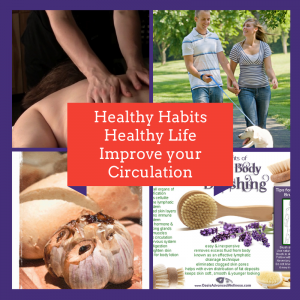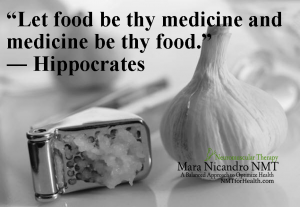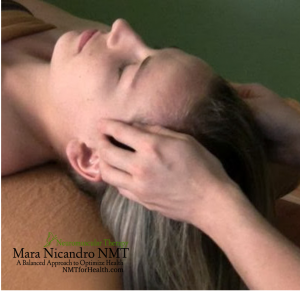 Why you don’t want to ignore the circulatory system. A major player in maintaining your health. It circulates your blood and lymph through out your body it consists of your HEART, blood vessels, blood, lymph, lymphatic vessels and glands which serves all the cells of the body. It’s main role is transporting oxygen and nutrients to the cells of the body and removes waste products such as carbon dioxide. The circulatory system is necessary to regulate temperature and pH balance and protect the body from diseases.
Why you don’t want to ignore the circulatory system. A major player in maintaining your health. It circulates your blood and lymph through out your body it consists of your HEART, blood vessels, blood, lymph, lymphatic vessels and glands which serves all the cells of the body. It’s main role is transporting oxygen and nutrients to the cells of the body and removes waste products such as carbon dioxide. The circulatory system is necessary to regulate temperature and pH balance and protect the body from diseases.
How can you tell if you’re having problems with your circulation? That can be a problem, the “Silent Killer” a familiar term. Named for hypertension because there are no apparent symptoms and is a major risk factor for developing heart disease. If you are not sure or suspect you are at risk, get checked this is the best way to be sure. If you experience the following it may be time to start implementing preventative measures.
- High level of anger, stress, anxiety, worry or fear. Examples include high anxiety over global stress, the environment and the future of the world.
- Overweight, your diet includes foods high in salt or fat, and you’re not physically active.
- Any family members have high blood pressure.
What does breathing have to do with it? We mostly take this for granted but the circulatory system transport oxygen from the surrounding air to make it readily available to individual cells. Playing a crucial role in determining oxygen supply, and therefore energy availability, to cells at various levels within the body. So check how you habitually breath and stop smoking because these can be a serious hindrance to the process.
Keep your circulation working efficiently with these natural ways
“Let food be thy medicine and medicine be thy food.”― Hippocrates. Eat your vegetables and fruits any kind are good for your health. An example would be
Eat your vegetables and fruits any kind are good for your health. An example would be
- Oranges they provide high levels of bioflavonoids to promote blood flow while also strengthening capillaries, as well as watermelon, a natural source of lycopene, which has been known to help prevent plaque buildup, a common obstacle to blood flow, to help promote healthy circulation.
- Nuts are rich in vitamin B3, which helps boost the blood.
- Garlic also helps promote circulation.
Avoid the usual culprits, saturated and trans fats, as well as sugary sodas or fruit drinks. This will help thin the blood so that it passes more easily through the small blood vessels. I would also recommend knowing where your food comes from and how your food is grown for less toxicity in your food.
Slow your breathing. Start with playing some gentle music and then getting comfortable and relaxed as possible. Breathe slowly and deeply through your nose but keep to a comfortable rate. A short pause between exhale and inhale is normal. Gradually extend your exhale until it’s twice the length of your inhale. Example: breathe in for 2 seconds, pause, and then exhale for 4 seconds. Do not count or use any kind of timekeeper. This will gradually slow your rate of breathing once you are used to the pattern.
Check your pulse. This is a quick and easy way to get information about your health. An uneven rhythm or a weak pulse may be a sign of a problem. Don’t be alarmed with a pause or extra beat now and then this is normal. first know what rate is normal for you. Your pulse should be steady, regular rhythm.
Legs up the Wall
let the blood that’s been pooling in your lower legs flow back into the rest of the body, including the brain. Curl up on the floor in the fetal position with your legs tucked and your bottom close to the base of the wall. Roll onto your back and straighten your legs up toward the ceiling. Your torso should now be perpendicular to the wall, your legs resting comfortably against it. Stay here for five minutes.
Moving and exercise. great way to help improve circulation is physical activity. Walking, swimming, and biking are all good to get the blood pumping. Go at a pace and intensity that you can still carry on a conversation without getting out of breath, but that provides enough of a challenge to suffice as a cardiovascular workout balance is key so rest is just as important. There are restorative movements that allow you to open your body through passive stretching, which I recommend if your dealing with a lot of stress and other factors.
 Scheduling a massage. In 2008, researchers studied 263 volunteers who had a massage for 45 to 60 minutes. Average blood pressure fell by 10 mg Hg and heart rate by 10 beats per minute after one treatment. Another study this year examined 8 women with high blood pressure who’d had an hour long massage each week for four weeks. At the end of that period, their blood pressure fell by 12 mm Hg systolic (top number) and measurements in the blood reflecting inflammation (specifically VCAM-1 if you like science) fell significantly. A control group just rested for the same amount of time and had smaller improvements in the same measurements.
Scheduling a massage. In 2008, researchers studied 263 volunteers who had a massage for 45 to 60 minutes. Average blood pressure fell by 10 mg Hg and heart rate by 10 beats per minute after one treatment. Another study this year examined 8 women with high blood pressure who’d had an hour long massage each week for four weeks. At the end of that period, their blood pressure fell by 12 mm Hg systolic (top number) and measurements in the blood reflecting inflammation (specifically VCAM-1 if you like science) fell significantly. A control group just rested for the same amount of time and had smaller improvements in the same measurements.
Studies have shown benefits of massage therapy for insomnia, multiple sclerosis, anxiety, cancer pain, post-operative recovery and other conditions.
Dry Bushing. I recently discovered this technique and didn’t like it at first took a break and started again and find it very helpful. It takes five minutes and increases the circulation to the skin. Make sure the brush and you are dry, work in gentle circular, upward motions, then longer, smoother strokes. Start at the ankles, in upwards movements towards the heart – the lymphatic fluid flows through the body towards the heart, so it’s important that you brush in the same direction.
Herbal remedies. I am researching Cayenne pepper tincture to try myself, I will keep you posted. Cayenne actually can raise the body temperature a bit, as it stimulates circulation and blood flow to the skin.
Benefits of Reducing Blood Pressure and Stress
- Lower risk of heart attack, heart failure, stroke, kidney disease and complications to other health problems.
- You will not fatigue as quickly or often and you’ll have more energy to do things, including physical activities.
- Less irritability and anger, think more clearly.
- Get along better with family, friends and coworkers, feel connected.
- Revitalize your body, mind and spirit, feel happier.
I hope you find these tips workable and add them into your life. “Motivation is what gets you started. Habit is what keeps you going.” ~Jim Ryun
References: The effect of deep-tissue massage therapy on blood pressure and heart rate. Effects of Swedish massage therapy on blood pressure, heart rate, and inflammatory markers in hypertensive women. 9 rich foods in Bioflavinoids
